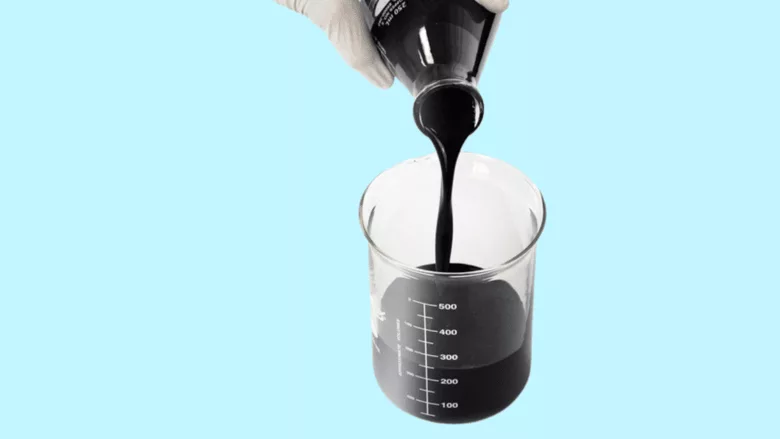New Filter System to Mitigate PFAS Said to Last 40 Years
The permeable adsorptive barrier (PAB) reduced PFAS by 99.9 percent at a former naval air station.

Image Courtesy of Business Wire
A new type of per- and polyfluoroalkyl substances (PFAS) filter is now available that has removed 99 percent of PFAS at locations where it was deployed and can last 40 years, but, because each system is “very project specific,” the cost of that filter system will vary from site to site an official who is close to the system told The Driller.
The permeable adsorptive barrier (PAB) was developed by Regenesis, a multinational corporation offering products that use advanced methods to provide remediation to contaminants that—in addition to PFAS—include petroleum hydrocarbons, chlorinated solvents, and metals.
Furthermore, the effectiveness of the PAB at a former naval air station in Alameda, Calif. earned Regenesis the 2025 Remediation Project of the Year award at the Environmental Analyst’s Sustainability Delivery Awards (EASDA). The Project of the Year award was awarded to Regenesis for PAB’s PFAS remediation which the awarding entity said is “A Sustainable, Cost-effective Solution” that has reduced PFAS by 99.9 percent at the former air station that was commissioned in 1940 and closed on April 30, 1997.
In April 2024, the Environmental Protection Agency set new drinking water standards for five PFAS substances, including PFOA, PFOS, PFNA, PFHxS, and HFPO-DA (also known as “GenX Chemicals”), as well as designating the PFAS substances perfluorooctanoic acid (PFOA) and perfluorooctanesulfonic acid (PFOS) as hazardous substances.
The 720-foot PAB is constructed using PlumeStop colloidal activated carbon (CAC), was deployed along the shoreline of the in Alameda harbor where the barrier effectively immobilized PFAS in the subsurface, preventing migration of those contaminants into surface water, according to Regenesis.
In addition, while the PAB barrier is “specifically” focused on PFAS, it will prevent migration of “any organic contaminant,” said Ryan Moore, program director for PFAS remediation at Regenesis.
Moore provided The Driller with a rundown of how the PAB works: “In essence, what we’re doing is we're injecting a fine particulate carbon, activated carbon particle into the aquifer and setting up these filter zones, so as groundwater passes through passively or under natural flow conditions, the PFAS will be pulled out of the dissolve,” he said.
With one of the biggest questions facing the use of PFAS filters being how to dispose of such filters once they are filled, Moore said “For our system, we don't necessarily have to do anything (related to) disposal.”
“What we’re (Regenesis) doing is a combination of source removal, source control, along with attacking the dissolved plume,” setting the situation where a user of the PAB “may not have to do anything further so there’s no disposal required,” said Moore, who added, the PAB has immobilized that PFAS in place.
Furthermore, Moore says there are differences between water utilities that are using PFAS filters with facilities using the PAB system at military, municipal, and industrial sites, with the system in use at more than 70 sites around the world, including at airports in Norway and Sweden; and at a textile manufacturing facility in Belgium. “The big difference between water utilities and what they’re utilizing for their granular activated carbon vessels or jack vessels is they’re running millions and millions of gallons of water for very short residence time,” he said. Such water utilities “have to exchange that media out to account for high flow systems,” he added.
“Now, when we’re doing it, we’re placing enough carbon in situ that under natural flow conditions, groundwater moves very, very slow compared to pumping, active pumping or running a few water supply systems, and so you get much longer residence time or contact time with the contaminants, and you can achieve significant reductions,” he said, adding, the PAB “can achieve decades worth of treatment, oftentimes greater than 40 years.”
Which means the user of the PAB can deploy it and not have to change it for 40 years. During that time, as a user monitors the PAB and becomes aware of any potential breakthrough of “contaminants fluxing through the zone,” all that is needed is to “fortify areas of the PAB,” and that can “get another 40 years of life out of it,” he said.
The PAB is currently available from Regenesis, but the cost is “very project specific,” Moore said. Deploying a PAB requires examining “a lot of factors, including groundwater speed, and the amount of peak mass that is migrating through the treatment zone, and the soil type is a very big factor and the depth of the treatment as well,” so “it’s hard to put a number on everything,” he said.
Click here to read a case study of PFAS migration at the former naval air station in Alameda, Calif.
Looking for a reprint of this article?
From high-res PDFs to custom plaques, order your copy today!





